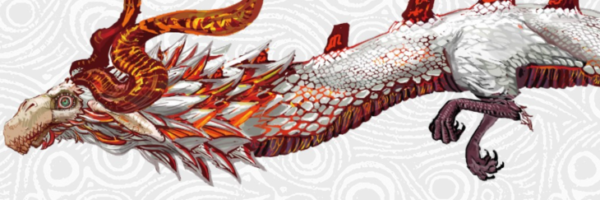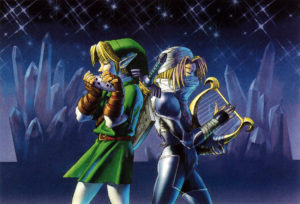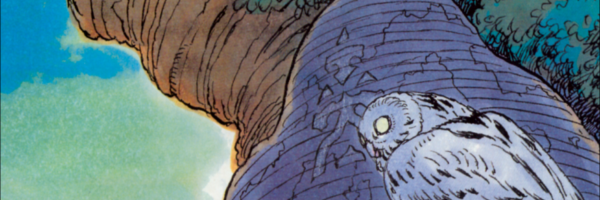There is power in a story, and more power the more that story is repeated. Everything in Hyrule and it’s adjoining kingdoms and alternate realms reflects this core truth. It is, after all, a world of legend.
How story is remembered shapes the past, present, and future of the world. Echoes of events travel throughout all histories, timelines, and even parallel realms. The inhabitants and even the very geography of the world are part of an endless cycle of retelling, resurrection, and rebirth.
There exist beings that are truly aware of this cycle, and attempt to exert influence over events in order to further their own goals.
For some, the goal is to achieve a perfect balance in the three guiding forces as provided by the Goddesses. For others, their goal is to increase their importance and influence, to be remembered and echoed across history. And of course, there are some who only wish to wield the power of the Goddesses for themselves, to not just influence events, but to hold creation in their grasp.
Journeys
In order for stories and legends to spread, they must be shared across the world. Each person who leaves their hometown carries with them a wealth of unique experience, of stories handed down by their own family or clan, and of their own story.
Although some folks are more naturally engaging storytellers, almost everyone is willing to speak to and amongst travelers, and it is through this exchange that legends are born and survive.
Some travelers end up with a more direct role in the shaping of legend, finding themselves in the midst of events both great and small. These travelers tend to catch the direct attention of a being who knows about the cycle, and that being often provides guidance or aid, both obliquely and directly, to point those travelers in the direction they feel is most necessary for their goals.
Guides
Called Ryuujin in the world of Ryuutama, in the worlds of The Legend of Zelda, the beings who seek to influence the cycle have many names. For the purpose of the game, we refer to the specific being who is watching the party as a Guide. The GM controls the Guide, and should choose one based on the kind of story they will be telling with their players.
Each Guide type comes with artefact and benediction choices, just as a Ryuujin would.
Forms
As with Ryuujin, Guides made take several forms. Unlike Ryuujin, these forms are not standard across all Guides. Some Guides may take a single form, and some may have a shapeshifted form or even a higher form (such as that of a dragon or major spirit!). If your Guide only has a single form that doesn’t travel, it is very likely they have the ability to watch events unfold in other ways, such as through lesser helper spirits. Many Guides in the Legend of Zelda series, such as the Great Deku Tree or Sahasrahla, communicate through telepathy. During Guide creation, replace the ‘Choose your shapeshifted form’ (pg. 134) with a step where you determine your Guide’s form and how they watch and communicate with the party.
Consider: is your guide embodied in a mortal or immortal being? Are they very obviously a guide, or do they appear to the party more as a reoccurring NPC they encounter at suspiciously convenient times?
Any person or being that embodies, follows, or simply truly desires the ideals of a given aspect of the Triforce may be a Guide for that aspect, but see the Example section for each Guide type for some inspiration.
Don’t forget: in The Legend of Zelda, Guides can be in danger! They may need the party to help them out directly — but try not to too this too often. It is, after all, the party’s Legend.
Leveling Up
Follow the Ryuujin leveling up rules, with some modification.
At level 7, you may choose to take part in the Traveler Introduction, or not. If you do, make sure that it makes sense for your Guide — and the party’s story! — to do this.
At level 10, instead of the Seasonal Dragon Leaves the Nest, one of the moments where the Guide appears in the party’s story becomes set into Legend. Record this, and create a Ritual Benediction together to reflect the campaign thus far, using the rituals in the book as guidelines.

Guides of Courage wish for the world to be vibrant and lively, and to protect those who cannot protect themselves. They want the stories that are passed down through the ages to be about the innate goodness of life and the ability to thrive and persevere against the odds, and for the cycle of Hyrule to be one of hope and transformation. Stagnation and ennui are antithetical to Guides of Courage.
Keywords
selflessly helping others, revealing truths, growth, transformation, the natural world, forgiveness
Example Journeys
Clearing a camp of monsters that have been harassing local farmers, rescuing someone who is lost, delivering an important package across harsh landscapes, protecting a sacred grove from blight, alleviating a curse
Designing your Guide
Consider beings that embody the Goddess Farore, including the Goddess herself. See also the dragon or light spirit Faron, the dragon Farosh, or the Oracle of Secrets.
Beings closely related to the forest (such as the Great Deku Tree) are also often considered to be Guides of Courage. Many of the helper characters that directly accompany Link, such as Navi, are also associated with Courage, since Link is.
A Guide of Courage is more likely to be or wear green than any other color, and be associated with the element of wind and plant life. Powers associated with Courage are often transformation-based or impart effects such as beams of light.
Pictured: Link’s uncle from Link to the Past embodies Courage, and provides Link with his first weapon and mission. Unfortunately, he is not able to guide Link throughout that journey.
Artefacts
Wooden Charm
This charm reminds travelers fiercely of the home they departed.
Each PC is guardian of someone or something that they want to keep safe above all else.
Training Shield
This nostalgic wooden shield inspires the travelers to come to the aid of others.
If a use of concentration to protect someone from physical harm succeeds, and would otherwise reduce a PC’s MP to 0, the first time this happens in a session, their MP is instead reduced to 1.
Lens of Truth
This mystical magnifying glass allows the travelers to uncover secrets.
The PCs are difficult to fool, and may roll a [SPI+INT TN:7] at any time to determine if there is anything hidden, secret, or transformed nearby.
Benedictions
The Tale of the Journey
As seen on page 128.
The Tale of Kindness
As seen on page 140.
The Tale of the Hero
As seen on page 142.
Guides of Wisdom wish for the world to be just and to follow natural law, and for the pursuit of cumulative knowledge. They want the stories that are passed through the ages to be about building on the past toward a brighter future, of the ideals of knowledge triumphing over the ideals of force, and for the cycle of Hyrule to be one without the repetition of past mistakes. Foolishness and disregard for experience are antithetical to Guides of Wisdom.
Keywords
restoration of justice, study of the past, compassion, vigilance, storytelling, record keeping, healing
Example Journeys
Finding a lost tome, exploring ancient ruins to learn about the culture that lived in them, repairing tears in reality, spreading the legend of a local hero, resolving a conflict between two parties who have misconceptions of each other, cataloging local flora and fauna, curing an illness, repairing a bridge
Designing your Guide
Consider beings that embody the Goddess Nayru, including the Goddess herself. See also the dragon or light spirit Lanayru, the dragon Naydra, or the Oracle of Ages.
Beings closely related to the water (such as Lord Jabu-Jabu) are also often considered to be Guides of Wisdom. As a frequent holder of the Triforce of Wisdom, embodiment of the goddess Hylia, and prominent NPC, Princess Zelda would usually be considered a Guide of Wisdom, with some exceptions.
A Guide of Wisdom is more likely to be or wear blue than any other color, and be associated with the elements of water and ice. Powers associated with Wisdom are often healing or protective in nature.
Pictured above is the owl Kaepora Gaebora, who follows Link’s journey in several games, most prominently in Ocarina of Time. He imparts advice on where to go next and can help Link travel more swiftly.
Artefacts
Crystal Charm
This charm protects the travelers with the divine blessing of Nayru.
PCs may spend one use of of concentration or one fumble point per day to negate up to 1 heart of damage per level.
Surveyor’s Tools
This set of fine surveyor’s tools aids the travelers in documenting the world around them.
The PCs travel at half-speed but learn much more about the world as they travel, and gain a +1 to checks to related to finding things in the wilderness(i.e. Herb Gathering), and travel checks, since they move carefully.
Book of Mudora
The crumbling paper of this tome intrigues the travelers to pursue its forgotten knowledge.
All the PCs are part of a team who are journeying to research the same place, legend, or topic.
Benedictions
The Tale of the Traveler’s Journal
As seen on page 138.
The Tale of Revival
As seen on page 142.
The Tale of the Historian
Once per session, if one of the PCs shares a story with a historical or nature-based theme with an NPC, the party is invigorated and gets a +1 bonus to the next day’s Condition Check.

Guides of Power wish for the world to be passionate and robust, and to demonstrate that they have excelled above others. They want the stories that are passed through the ages to be about the path to becoming the best of the best, and for the cycle of Hyrule to be one where the tangible world is important above all else. Giving up or being bested are antithetical to Guides of Power.
Keywords
strength, champions, building, competition, mastering a physical art, proving oneself
Example Journeys
participating in a contest of strength and endurance, besting a rival, defeating one of each kind of monster in the world, finding the world’s hottest pepper in order to consume it, fortifying an area against attack, preventing someone else from taking control over a powerful artefact, forging a legendary item
Designing your Guide
Consider beings that embody the Goddess Din, including the Goddess herself. See also the dragon or light spirit Eldin, the dragon Dinraal, or the Oracle of Seasons.
Beings closely related to the fire (such as the Dragon Volvagia, before it was used for evil ) are also often considered to be Guides of Power. Since Nintendo frequently uses Power as the purview of the antagonist, there are fewer positive or neutral examples explicitly called out in the game. However, consider that the Goron people, who are almost universally friendly, are associated with the Goddess Din and by extension, Power.
A Guide of Power is more likely to be or wear red than any other color, and be associated with the elements of fire and earth. Powers associated with Power are often used for offense, either directly with elemental damage, or as buffs to someone’s damage output.
Pictured above is the dragon Dinraal, who is the guardian of the Spring of Power in Breath of the Wild. Though it does not directly guide Link in his journey, its scales are necessary to access the shrine at the spring, which is helpful for Links journey.
Artefacts
Obsidian Charm
This charm is jet-black, and makes the traveler’s muscles stronger.
The PCs each get three pieces of power per session. They can spend these for a +1 bonus to checks involving strength; they can be used after the roll is made, but not saved between sessions.
Fortified Milk
The contents of this bottle give travelers the strength they need to endure much.
This has the same effect as the Crystal (pg. 140), except that PCs will not die unless they take 10 more hearts of damage after fainting (see Health and Damage rules).
Medal of Honor
The gleam of this medal inspires travelers to prove their prowess.
The PCs each have a life-long dream of winning a competition or participating in a difficult rite of passage.
Benedictions
The Tale of the Challenge
As seen on page 142.
The Tale of the Wager
When encountering an NPC for the first time, up to two PCs can make a wager with that NPC regarding a physical skill based challenge. They should set the terms of the wager before rolling an appropriate Contested Check to see who wins.
The Tale of Endurance
If a PC suffers a status effect,, they only suffer it up to their current condition minus one. For example, if a character with a condition of 5 suffers [Poison: 6], it is reduced to [Poison: 4].

